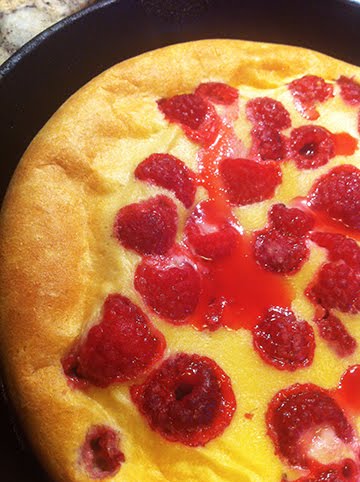The Bread Baking Babes group has been baking for so many years now that it is something of a challenge just to find breads we haven't baked yet. This month I'm Kitchen of the Month for the Babes, but I've had the recipe ready for months. It's similar to last month's challenge, Povitica, in that it requires a thin, rich dough. It also has a filling using nuts, but this filling is very different. The shaping method is also different, so I do hope that if you like to bake bread that you'll try this one. I'm sorry that this wasn't posted this morning, but we were having work done on the house and my computer was covered with dust cloths until just a little while ago.
I found the recipe for this month's bread during the pandemic, when I was throwing out old magazines. It's from Sunset Magazine from 2001. I used to have a subscription but it's been a while since I had a subscription to any magazine. When I first came to California from the east coast, Sunset was a great resource for living the west coast lifestyle. This recipe isn't Californian, or even west coast, because it's a recipe for a nut roll from Hungary.
One of the reasons I chose it is because, once baked, it keeps for a week, meaning there is a treat waiting at tea time for that long without heating up the oven again, especially since it is a 2-pound loaf. Another reason is that I was fascinated by the idea of a filling made with cooked milk and almonds.
The dough is basically a brioche dough, so don't expect a big rise out of it. It is rich tasting and goes really well with the almond and dried fruit filling. I used dried cherries which I soaked for an hour in Kirsch. I'm not sure that you can tell that they were soaked in a liqueur, but they are nice and soft.
I did have some trouble with rolling the dough using a cloth. I used a linen couche and thought that I had it well floured, but it stuck quite a bit as I rolled it. Still, once baked you couldn't really tell. Will probably try this again with an actual tablecloth.
The filling is really fun. You start with a slurry of milk, almonds and dried fruit but with enough heat, it turns into an almost creamy filling with great flavor and fragrance. I did add a few drops of almond extract along with the vanilla because almond flavor really goes well with cherries.
Do try this yourself. If you'd like to be a Buddy, bake it and then email me by June 29th to be included in the round-up. I'd love a photo and a short description of your experience with this bake. Plachman -at-sonic-dot-net.
Also, be sure to visit the other Babes blogs to see what they have done with this tea time treat!
1 package active dry yeast
6 tablespoons warm water
1/4 cup sugar
2 large egg yolks (divided)
About 6 tablespoons butter or margarine, cut into small pieces
About 1 1/2 cups all-purpose flour
Almond Filling (recipe follows)
1 tablespoon milk or water
Spread or evenly dot Almond
Filling over dough to within 1-inch of edges. Lift cloth from one side to roll
dough into a compact loaf. Gently lift loaf and lay, seam side down, on a
buttered 12-inch x 17-inch baking sheet. Pinch ends to seal, then fold under.
Cover loaf loosely with
plastic wrap and let stand in a warm place until dough is slightly puffy, about
45 minutes.
In a small bowl, mix
remaining egg yolk with milk. Brush loaf with yolk mixture; discard any
remaining.
Bake loaf on the center rack
in a 325 degree F regular or convection oven until rich golden brown, about 45
minutes. Transfer to a rack and let cool at least 1 hour. Serve at room
temperature. Cut cross-wise into 1/4-inch thick slices.
Almond Filling: In a food processor, whirl 1 cup un-blanched almonds to fine meal. Ina a 10-12-inch nonstick frying pan, combine almonds, 3/4 cup raisins, 3/4 cup sugar, 3/4 cup milk, and 1 teaspoon grated lemon zest. Stir over high heat until mixture is thick enough to hold a clean trail for a few seconds when you draw a spoon across pan bottom. Remove from heat and stir in 1/2 teaspoon vanilla. Let cool at least 30 minutes.





























